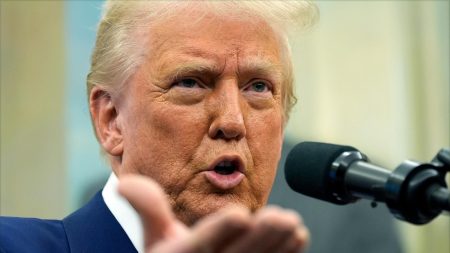Germany’s Shifting Trade Landscape: A New Era with the U.S. as Leading Partner
Overview of Germany’s Trade in 2024
In a notable shift in global trade dynamics, the United States reclaimed its position as Germany’s largest single trading partner in 2024, a status it last held in 2015. This change was driven by a slight increase in trade between the two nations, while Germany’s trade with China declined significantly. According to data released by Germany’s Federal Statistical Office, the total trade volume between Germany and the U.S. edged up by 0.1% to 252.8 billion euros ($264.3 billion) compared to the previous year. Meanwhile, trade with China dropped by 3.1% to 246.3 billion euros, marking the end of China’s eight-year reign as Germany’s top trading partner. The Netherlands, with a trade volume of 205.7 billion euros, secured the third position, though its trade with Germany also declined by 4.2%.
Economic Challenges and the Road Ahead
Germany, home to Europe’s largest economy, has faced significant economic challenges in recent years. The country has not experienced meaningful growth since 2019, and its economy has actually contracted in each of the past two years. For decades, Germany has been a global powerhouse in exports, particularly in engineered products such as industrial machinery and luxury cars. However, increasing competition from Chinese companies, along with other global economic pressures, has taken a toll on its export-driven economy. Fixing this economic stagnation will likely be a top priority for the new German government that emerges from the recent federal election.
The U.S. as a Key Trading Partner
The U.S. has long been a critical trading partner for Germany, and in 2024, it solidified its position as the country’s most important single-market trading partner. The U.S. has consistently been Germany’s largest export destination since 2015, and last year was no exception. German exports to the U.S. rose by 2.2% to 161.4 billion euros, while imports from the U.S. declined by 3.4% to 91.4 billion euros. This imbalance contributed to a widening trade surplus for Germany with the U.S., which grew to 70 billion euros in 2024, up from 63.3 billion euros the previous year.
Trade Relations with China: A Widening Deficit
While Germany’s trade with the U.S. remained robust, its trade relationship with China continued to deteriorate. In 2024, Germany’s exports to China plummeted by 7.6% to 90 billion euros, while imports from China dipped slightly by 0.3% to 156.3 billion euros. This resulted in a widening trade deficit with China, further highlighting the challenges Germany faces in maintaining its once-thriving economic ties with the Asian powerhouse. The decline in trade with China is part of a broader trend, as Germany struggles to compete with China’s rising economic influence and industrial capabilities.
Implications of the German Election
The recent German election, held on Sunday, will play a pivotal role in shaping the country’s economic and trade policies moving forward. The incoming government will inherit not only the task of revitalizing Germany’s stagnant economy but also the challenge of navigating the complexities of its trade relationship with the U.S. The new U.S. administration’s trade policies, which could have significant implications for transatlantic trade, will require careful consideration and strategic negotiation. Additionally, the government will need to address the ongoing competition with China and explore ways to reinvigorate Germany’s export-driven economy.
Global Trade Trends and Germany’s Future
Overall, Germany’s trade performance in 2024 reflects broader shifts in the global economy. Total German exports for the year amounted to 1.56 trillion euros, a 1.2% decline compared to 2023, while imports dropped by 3% to 1.32 billion euros. These figures underscore the challenges Germany faces in maintaining its position as a global trade leader. As the country looks to the future, it will need to adapt to changing trade dynamics, including the rise of new competitors and evolving geopolitical relationships. The ability of the new government to address these challenges will be crucial in determining Germany’s economic trajectory in the years to come.















